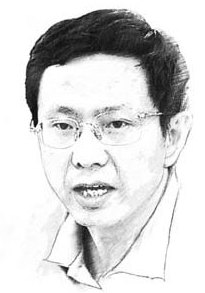What does the second half hold in store?
Updated: 2012-07-13 11:16
(China Daily)
|
|||||||||||
Editor's Note: Once again, China's economy is at a crossroads.
Worrying developments have been spotted in its second-quarter performance, the results of a slowdown in business at home, and dwindling orders from Europe and Japan.
This is quite a different picture from the beginning of the year, when inflation, rather than a lack of growth, was the economy's No 1 enemy.
After Premier Wen Jiabao pledged earlier this week to keep China's growth rate going, some quick adjustments can be expected to be seen in how Beijing runs the world's second-largest economy.
Where will they occur? Will they be effective? What industries can expect to see early benefits? And how well will the general economy fare in the remainder of the year?
China Daily has invited some leading economists to share their thoughts.
Q1
With analysts forecasting China's second-quarter GDP growth to hit a new low, do you envisage an even lower growth rate in the coming months? How much GDP growth do you forecast for the third quarter?
Q2
The central bank has already cut interest rates twice, first in June, then in July. How much do you think the interest rate cuts are helping the economy's growth? And do you think there is still room for further interest rate cuts and cuts in banks' reserve requirement ratios in the remaining months of the year?

Q3
While inflation is coming down, do you think it is coming down so abruptly as to threaten deflation? What's the likelihood of deflation emerging in China today?
Q4
Do you think a large increase in investment in government projects will help turn around the economy? Or do you think there are other ways to better-stimulate growth?
Jia Kang
director of the Institute of Fiscal Science, a think tank affiliated with the Ministry of Finance, and a guest economist of China Daily
A1
Based on the public statements made by the government so far, the decline in economic growth may end in the second or the third quarter of this year. This means that even if growth in the third quarter is lower than the second quarter, it will be replaced by higher growth rate in the fourth quarter.
A2
The central bank has cut interest rates twice in a very short period. This is remarkable not only for its intensity, but also for the strong signal sent by the central bank. The signal is that the central bank has realized the danger posed by sliding growth and is determined to pump it up.
If economic indicators continue to deteriorate in the third quarter, I think there is still room for further cuts in interest rates and reserve requirement ratios.
A3
The consumer price index grew by a mere 2.2 percent in June. This is something that we have to keep watching closely. CPI growth in the next one to two months may further dip. In economic theory, a period of deflation always follows a period of inflation. It's a normal economic cycle. So deflation is just a matter of time. But I think if it is handled well, deflation will not occur in the second half of this year.
A4
To address declining economic growth, the nation's top economic planning agency has fast-tracked the approval of infrastructure projects. But keep in mind that the speeding up of approvals does not equal a surge in infrastructure investment. This is not a repeat of the massive stimulus package of 2008, during which the central government approved a bunch of infrastructure projects. What's more, the speeding up of approvals is taking place on a very selective basis. I think it is important to activate private capital by lowering the thresholds in several industries.
Today's Top News
President Xi confident in recovery from quake
H7N9 update: 104 cases, 21 deaths
Telecom workers restore links
Coal mine blast kills 18 in Jilin
Intl scholarship puts China on the map
More bird flu patients discharged
Gold loses sheen, but still a safe bet
US 'turns blind eye to human rights'
Hot Topics
Lunar probe , China growth forecasts, Emission rules get tougher, China seen through 'colored lens', International board,
Editor's Picks

|

|

|

|

|

|





